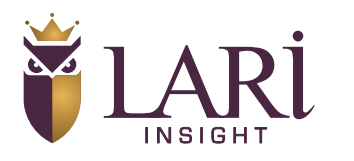Canadians Cut Back on Spending: 27.6% are Spending Less on Non-essential Items
The LARi Insight 2024 inflation survey highlights the ways some Canadians are managing their spending habits to cope with rising inflation. Among over 1,200 survey respondents, 27.6% indicated they are spending less on non-essential items. This is reflected in RBC’s consumer spending tracker, which observed that October 2023 marked the largest monthly decline in discretionary services sector spending in six months. Our survey respondents shared a wide variety of ways they are cutting back on spending, including: food volume and quality, medication, alcohol, Christmas lights, dentist visits, kids’ extra-curricular activities, heating, health supplements, and hair dye.
Consumer spending data can be misleading. Because of inflation, we’re spending more to acquire items that cost less in the past. So while the overall consumer spending numbers show year-over-year growth, many consumers will have little to show for it.

22.8% of Canadians are Budgeting More Carefully
With inflation driving prices up in virtually all cost categories (Canada’s inflation levels have increased 16.3% between May 2020 and December 2023), it’s no surprise that managing a tight budget and controlling debt are top priorities for Canadians.
Most of our money goes to Shelter (31.4%), food (15.4%) and transportation (15.0%) according to a 2021 survey by Statistics Canada. The average family spends $67,126 on goods and services. This amount varies as low as 57,582 in New Brunswick and as high as $75,028 in BC.

“I’m making additional payments to mortgage principal to cut the future impact of interest rates.” – Debra, Port Coquitlam, BC
Canadians are Cutting Back on Dining Out and Travelling
20.8% of survey respondents indicated they are cutting down on dining out, while 16.4% indicated they are reducing travel and vacation expenses. The recent report from RBC’s consumer spending tracker noted that “Canadians swapped vacations and dinners out for gasoline and clothing purchases in October… restaurant purchase volumes continued to fall alongside spending on hotels.”
12.4% of Canadians are Seeking Additional Income Sources
While many Canadians are finding ways to stretch their dollars further, 12.4% are looking to increase their monthly income through new opportunities.
Canadians Split on Approach to Debt Repayments
Our inflation survey asked, “In response to inflation, how have you altered your approach to debt management and borrowing?” While 31.2% reported no changes to debt management, more respondents indicated they had accelerated debt repayment efforts (16.5%) than those who have slowed down or deferred debt repayments (12.1%). It’s clear that debt is an increasing concern for Canadians, and we’ve written in detail on Canadians’ focus on debt reduction.
17.0% of survey respondents told us they have taken on more debt, while 6.5% have refinanced their debt as a result of inflation. Rounding out all responses, 16.7% of respondents chose “Not applicable / I do not have any debt”.

Resources to Help with Budgeting and Debt Reduction
The best approach to creating a family budget that works is to have a detailed budget plan and stick to it. The LARi Insight mortgage calculator and simple loan calculator help you get a firm grasp of your debt obligations, and our tips for debt reduction can help you get back to a healthy financial balance. To assess your salary growth relative to Canada’s inflation, try our wage inflation calculator, and our CAD inflation calculator lets you track your spending power relative to Canada’s inflation. Finally, consider establishing an emergency fund to address any unforeseen setbacks. Our emergency fund calculator can help you set a goal and a plan.
The Financial Impacts of Canadian Inflation
Explore our complete coverage, with original market research and analysis from LARi Insight.















